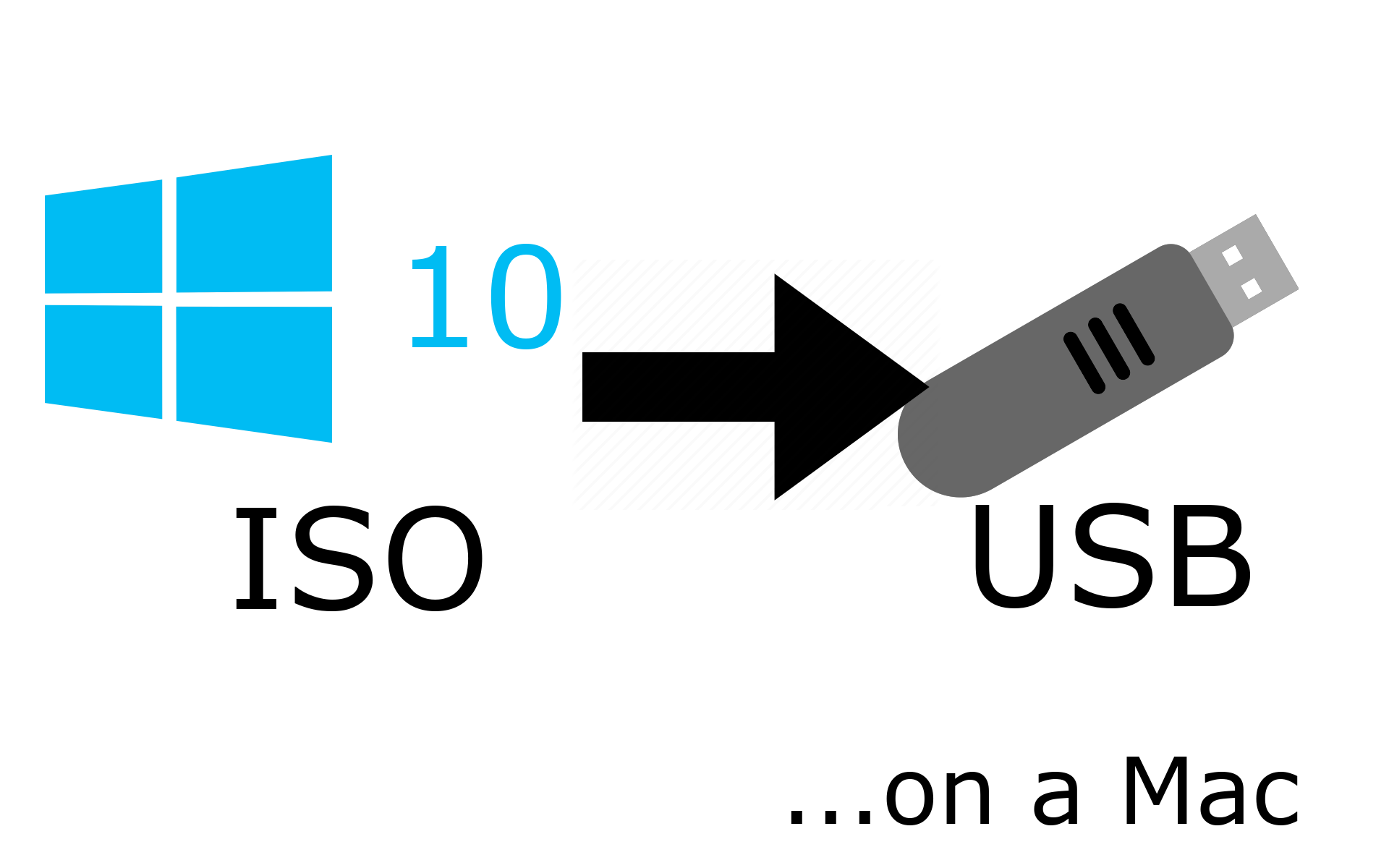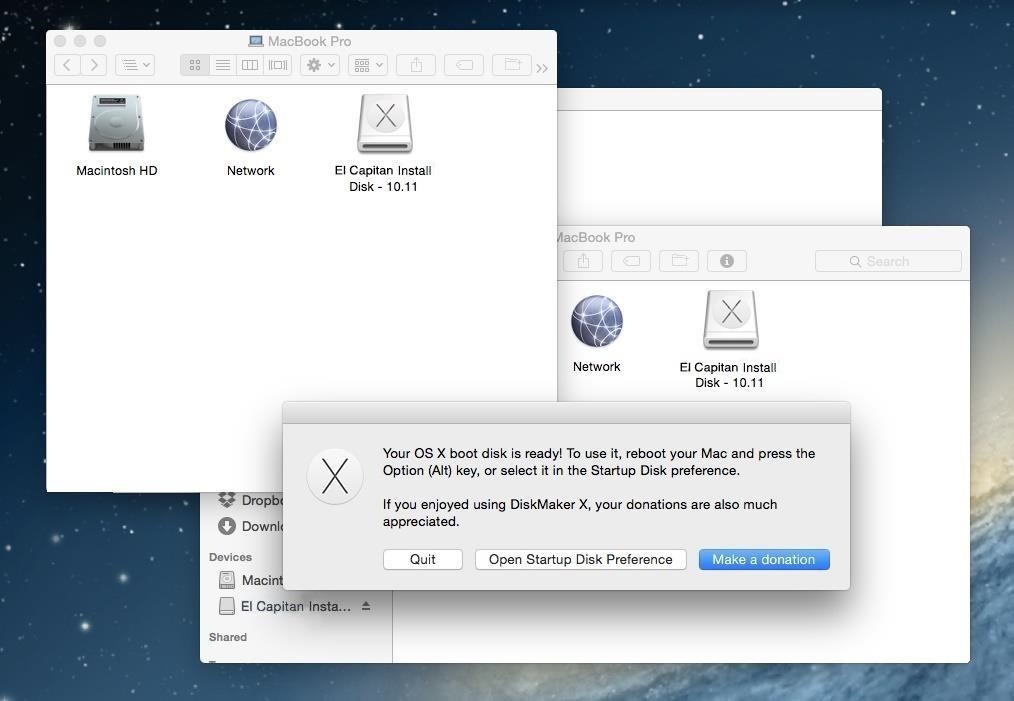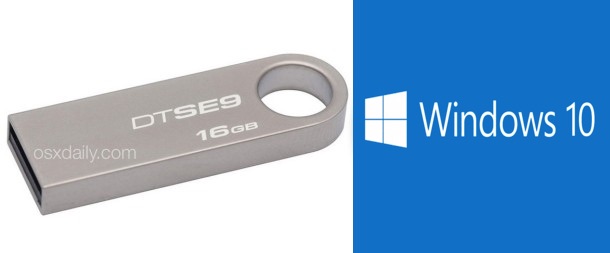

- #Make a bootable usb for mac on a windows for mac os x#
- #Make a bootable usb for mac on a windows install#
- #Make a bootable usb for mac on a windows upgrade#
- #Make a bootable usb for mac on a windows full#
- #Make a bootable usb for mac on a windows pro#
one final note If you use boot camp you do have the option to NOT install Windows via boot camp but still create a Windows 10 Installer USB.
#Make a bootable usb for mac on a windows pro#
If you have an Intel Mac such as an iMac or Mac Pro you can use Virtual Box.
#Make a bootable usb for mac on a windows full#
Parallels is NOT free however you do receive a full software trial license which i believe is good for at least a week. you can also try to install Ubuntu in parallels and create the USB Installer Disk from there. If you have an M1 Mac you will need an ARM based Windows image to install with parallels. Or if you dont want to do that you can try to restore the USB disk using the Disk Utility app. from there you can download the Windows Media creation Tool for 20H2 and create the USB disk from that. If your still having issues with that you may want to try to use Parallels and installing windows on that. P.S I managed to create a bootable Windows 10 USB on Mac in less than 3 minutes with UUByte ISO Editor. It is done in less than 5 clicks. You can check out the step by step tutorial from here: Most importantly, there is no command staff involved. You can install it on Mac with Homebrew:Īnother simple solution is UUByte ISO Editor for Mac, which has a new build for macOS Big Sur and supports latest Windows 10 ISO without the need to install additional software or libraries. This could be challenging task for most people. This can be done with wimlib, a command line utility for macOS. However, the latest Windows 10 ISO is too large to sit on a FAT32 partition so you have to split the install.wim into small parts. So the only working file system for Mac is FAT32 if you want to create a Windows bootable USB on Mac.

MacOS does not support NTFS by default and exFAT is not recognized as a bootable device by most computer motherboards. Windows 10 ISO image is too large (install.wim > 4GB) It could take one or two hours to complete the process depending on your computer and other variables.It wasted me hours playing with Terminal app when trying to create a Windows 10 bootable USB on my MacBook Pro with Big Sur 11.1.
#Make a bootable usb for mac on a windows for mac os x#
Use the Restore Disk Image to Drive dialog box to browse for the DMG file with the installation files for Mac OS X Yosemite in this case, and click the OK button to create a bootable USB of the operating system.

In the warning dialog box, click the Yes button. On the left pane, you’ll see all the Windows PC drives listed, right-click the USB drive that you’re intending to use to reinstall Apple’s OS X and select the Restore with Disk Image option. (You’ll be prompted to Enter Key or Run, because we’ll be using it once, click the Run option.) Right-click the TransMac software icon and Run as administrator. Make sure you take off any important documents.) (Remember that all the data in the USB will be erased. Insert the USB drive that you’ll use to fix your installation of OS X. (If you want to support the developer, you can purchase the full version.) Quick note: TransMac is a paid software, but it has a 15-day trial solution, that give us more than enough time to move the DMG files to the USB drive from Windows. Search for Command Prompt, right-click the top result and select the Run as Administrator option. Use these steps to set up a USB drive with a GPT partition: To do this, you’ll need to use the Diskpart command-line utility on Windows 10. Create Mac OS X bootable USB installation mediaīefore you can use TransMac, you first need to partition your USB flash drive with a GPT partition, as a normal MBR partition may not work. Now that you have all the necessary ingredients, you’re ready to make a Mac OS X bootable USB using the DMG file of the operating system with the steps below.

Requirementsīefore you dive into this guide, you’ll need a few things:
#Make a bootable usb for mac on a windows upgrade#
These instructions will also work for Windows users who are running Mac OS X on a virtual machine and need to upgrade to the latest version. However, if you find yourself on a scenario where your device (iMac, MacBook Pro, Air, Mac Pro or Mini) is not responding and you happen to have a Windows 10 device, then you can still be able to make a USB bootable installation media for your Mac OS X to reinstall the operating system using the Recovery Assistant. This is why it’s recommended that you make a Mac OS X bootable USB when your Mac is in working conditions. If you’re still using a Mac OS X the time will come when your computer won’t boot, or a problem may arise where you can’t take control of the device, and booting from an OS X installation media will be required.


 0 kommentar(er)
0 kommentar(er)
